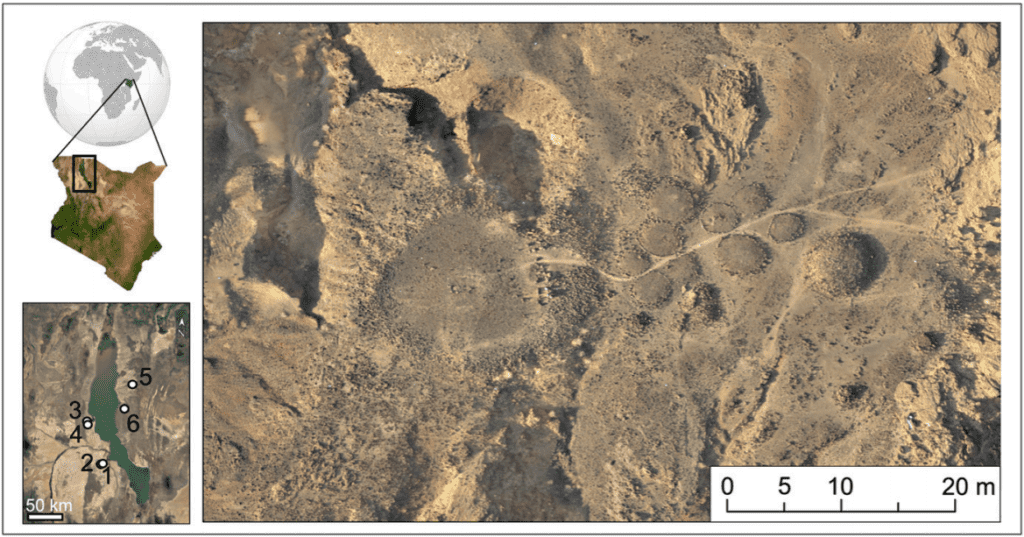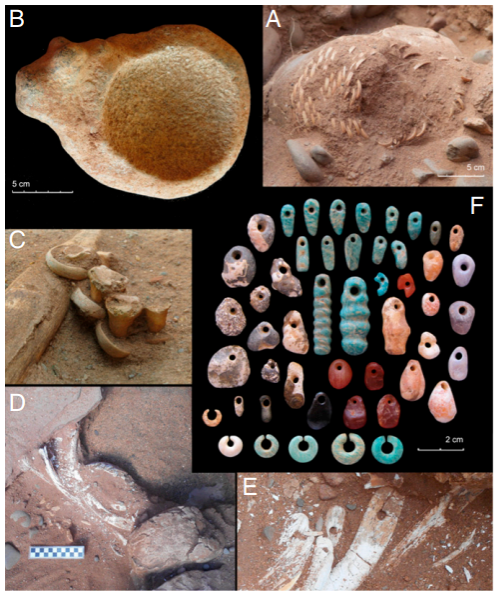A massive cemetery complex in the plains of Kenya shoots down the theory that social hierarchy is required to build monuments.

Image credits
An international team of researchers has uncovered the earliest and largest monumental cemetery in all of Eastern Africa. Christened the Lothagam North Pillar Site, the monument complex was built over 5,000 years ago. The most surprising bit? Its builders were simple herders living around Lake Turkana, Kenya. They’re believed to have had an egalitarian mindset, rejecting any social stratification.
The discovery contradicts the long-standing view that a stratified society, split between rulers and ruled, is required to construct large public buildings or monuments.
Communal building
The site represents a communal cemetery built and used over a period of several centuries (between 5,000 and 4,300 years ago, roughly), the team reports.
It is comprised of a round platform about 30 meters in diameter, in the center of which the early herders dug a large cavity to inter their dead in. After this cavity was filled, they capped it with stones and placed megalithic pillars on top. These pillars were sourced from as far as a kilometer away.
The team estimates that a minimum of 580 individuals were “densely buried” in this central cavity. There doesn’t seem to be any particular individual that received special treatment — people of all ages, from infants to the elderly, were buried here. All individuals were buried with personal ornaments but nobody stands out as being poorer or wealthier than their peers. In fact, the distribution of ornaments is surprisingly even throughout the cemetery, which the team takes as an indicator of a relatively egalitarian society without strong social stratification.
Stone circles and cairns were subsequently erected at the site over time.

Image credits
Given the expenditure of both effort and resources required to build large structures, as well as the logistical hurdles associated with organizing the whole thing, archaeologists simply took it as a given that a group needs a political structure to be able to undertake such projects. There’s also the fact that the roles these buildings played — they’re reminders of shared history, culture, religion, or ideas — are indicative of a settled, socially stratified society with abundant resources and strong leadership.
Taken together, it made archaeologists view ancient monuments as definite indicators of complex societies that allow specialization of work — and, through it, differentiated social classes.
The people who built the Lothagam North cemetery, however, were simple herders. We have no evidence that they had a rigidly-tiered society; if anything, their burial site suggests they were all equal in their society’s eyes.
“This discovery challenges earlier ideas about monumentality,” explains Elizabeth Sawchuk of Stony Brook University and the Max Planck Institute for the Science of Human History. “Absent other evidence, Lothagam North provides an example of monumentality that is not demonstrably linked to the emergence of hierarchy, forcing us to consider other narratives of social change.”
The discovery could lead historians to reshape how we understand the emergence of complex societies.
The authors write that Lothagam North was likely built during a period of profound change. The Turkana Basin had so far been populated by diverse groups of fisher-hunter-gatherers, but now groups of herders had started settling in and around the basin. So on one hand, these new arrivals brought about massive innovation — from hunter-gathering to animal husbandry. At the same time, the area experienced a drop in rainfall levels, causing Lake Turkana to shrink by as much as fifty percent, the team explains.
It’s possible, then, that the herders constructed the cemetery as a place for people to come together to form and maintain social networks to cope with major economic and environmental change.
“The monuments may have served as a place for people to congregate, renew social ties, and reinforce community identity,” says co-author Anneke Janzen. “Information exchange and interaction through shared ritual may have helped mobile herders navigate a rapidly changing physical landscape.”
It took several centuries for pastoralism to overtake hunter-gathering as the main source of sustenance in the basin, and for the lake to stabilize. After this happened, however, the cemetery ceased to be used — further supporting the team’s hypothesis.
“The Lothagam North Pillar Site is the earliest known monumental site in eastern Africa, built by the region’s first herders,” Hildebrand adds. “This finding makes us reconsider how we define social complexity, and the kinds of motives that lead groups of people to create public architecture.”
The paper “A monumental cemetery built by eastern Africa’s first herders near Lake Turkana, Kenya” has been published in the journal Proceedings of the National Academy of Sciences.





